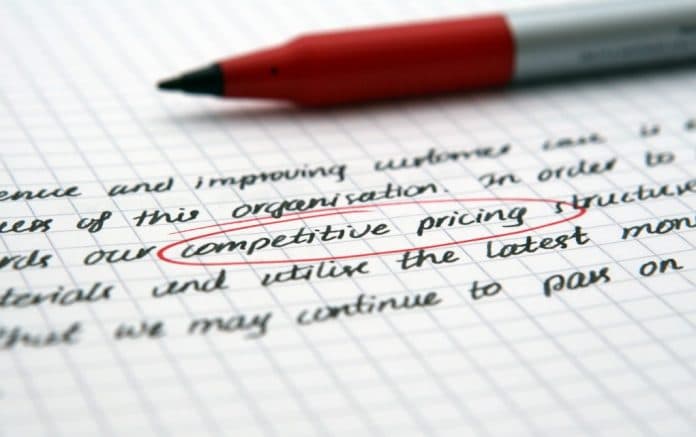Jason Howells offers simple steps you can take to make a price hike more palatable for customers
 It happens to every service business sooner or later – that awkward moment when you need to confront your customers with an increase in the cost of your services in order to stay profitable.
It happens to every service business sooner or later – that awkward moment when you need to confront your customers with an increase in the cost of your services in order to stay profitable.
But does it really have to be awkward? Not if you plan ahead and communicate well.
There are plenty of reasons you may need to raise prices: supplier price increases, inflation, increasing service demands, margin erosion, and other factors that require cost adjustments to maintain or improve service levels.
If you aren’t prepared, announcing those price increases to customers could be difficult or even cause some clients to call it quits. You can achieve a better outcome (that is, more revenue and happier customers) if you communicate regularly, prove your value and avoid surprising them with unexpected increases.
How you handle the price increase conversation will depend on why it’s happening in the first place.
Communicate early
Your suppliers may increase their prices, which will warrant an increase on the part of the business. Alert customers as soon you know that a product price increase is coming, and let them know you’ll have to pass that along in order to continue providing that product or service.
However, you can’t just raise prices every time your suppliers do or you might price yourself right out of business. Customers aren’t going to put up with frequent increases. Evaluate potential increases, and make sure you price for sustainable profits over several years.
Survey the competition
Check whether your rates are in line with comparable service providers. If they’re not, develop a plan to gradually bring your prices in line with the market.
Put it in writing
Include language about regular inflationary/cost-of-doing-business increases in your agreement. These increases should be a percentage of the existing price that can help adjust for the rate of normal inflation or other factors.
This is a simple way to introduce the cost increase conversation in the regular contracting process, so you don’t have to go back and revisit the issue later. It also gives your customers plenty of warning when an increase is coming and provides a timeline so they can adjust their budgets.
Tie cost increases to your value proposition
Odds are you will add new services and features over time, and that will require price increases to maintain your margins. Explain the new value you’re providing and how the new features/functions will affect ROI or total cost of ownership. Customers will be more willing to accept these increases if they know they’re getting improved services or additional benefits.
Communicate your value regularly
Schedule a reasonable number of check-in calls per year, starting off with a QBR (Quarterly Business Review) with each customer to evaluate how things are going. Customers will remember that you took the initiative, and they will appreciate the gesture. This ongoing dialogue with customers about the services you’re providing and changes in the marketplace helps to ensure they are aware of new products and features, new security threats you’re monitoring, and other activities. Then, when it’s time to talk about a price increase, they will already know what you’ve been doing to help their business succeed.
Offer additional options
You can also introduce price increases by creating new service or product bundles. If necessary, make sure a lower-cost option is still available, but emphasise that they can obtain greater value with the more expensive package. Ultimately, you will find that most customers care more about the value of what they are receiving than the price.
Weed out the weak
Sometimes it is hard to recognise which customers are profitable and which ones are not. Often, though, it is those who focus on price versus the value of the services they are receiving that place the most strain on business resources. Even though there’s still a risk you could lose some business, it’s possible to structure price increases to help weed out unprofitable customers (particularly if you may have been under-pricing your services). For example, if you have clients that require higher degrees of service than normal but also clamour for constant discounts, a rate increase can send them searching for a lower-cost provider and free up your staff to bring in new business or concentrate on creating new revenue opportunities with less troublesome customers.
Remember, your customers are also business owners, and they have likely been in the same position as you when it comes to periodically raising prices. Think about why you are increasing prices, communicate those reasons clearly and confidently, and make sure you’ve laid the right foundation by regularly communicating with your clients about the value you provide.
If you’ve checked these boxes, periodic rate adjustments can be introduced with minimal drama and without alienating your clients.
Jason Howells is EMEA director at Barracuda MSP


